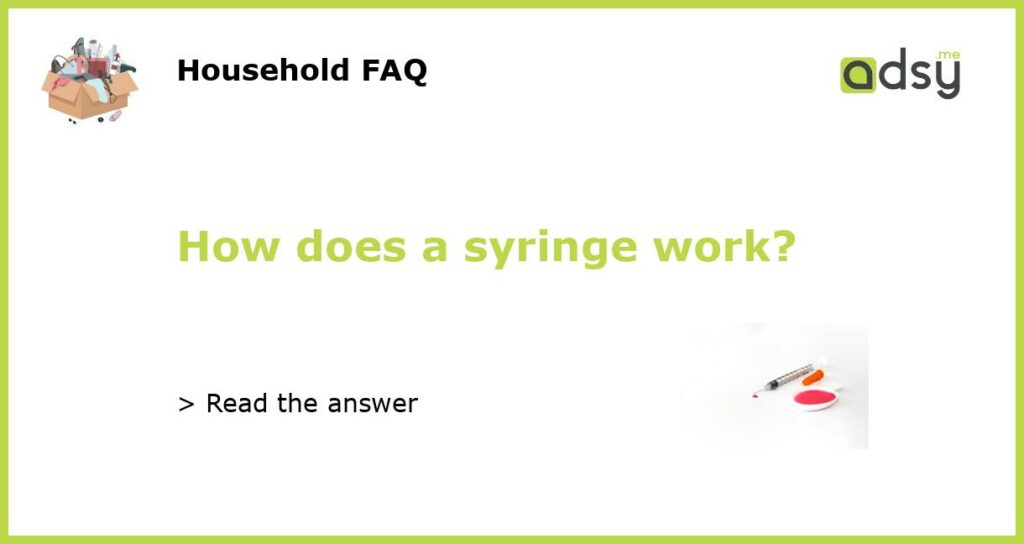How does a syringe work?
A syringe is a simple instrument used for injecting or extracting fluids from the body or other objects. It consists of a cylindrical barrel, a plunger, and a needle. The basic principle behind the functioning of a syringe is based on the principles of atmospheric pressure and fluid dynamics.
The components of a syringe
Understanding the different components of a syringe is essential to grasp its mechanism. The cylindrical barrel is where the fluid is held. It is often transparent, allowing the user to see the quantity of fluid being injected or extracted. The plunger is a long rod attached to a piston at one end and a thumb grip at the other. When the thumb grip is pushed or pulled, it moves the piston back and forth within the barrel, creating pressure changes. The needle is a hollow, pointed tube attached to the barrel. It is responsible for the entry and extraction of fluids.
The principle of atmospheric pressure
Atmospheric pressure plays a vital role in the functionality of a syringe. Atmospheric pressure is the force exerted by the weight of the air on the Earth’s surface. Inside a syringe, there is an enclosed space with air trapped in it. When the plunger is pulled back, the volume of the enclosed space increases. As per Boyle’s Law, an increase in volume leads to a decrease in pressure. As a result, the pressure inside the syringe decreases, creating a vacuum.
Fluid dynamics and the movement of fluids
Fluid dynamics is the study of how fluids behave and interact with their surroundings. In the case of a syringe, when the plunger is pulled back, the decrease in pressure inside the barrel creates a pressure difference between the barrel and the needle. According to the principle of fluid dynamics, fluids flow from areas of high pressure to low pressure. This pressure difference causes the fluid to flow into the syringe through the needle.
The role of the plunger in controlling fluid movement
The plunger in a syringe allows the user to control the movement of fluid in and out of the syringe. When the plunger is pushed, it increases the pressure inside the barrel of the syringe. This increase in pressure forces the fluid out of the syringe through the needle. By controlling the speed at which the plunger is pushed or pulled, the flow of fluid can be regulated.






